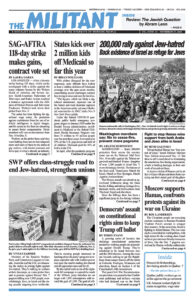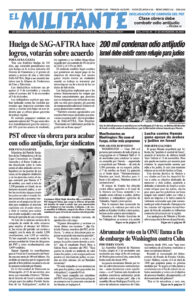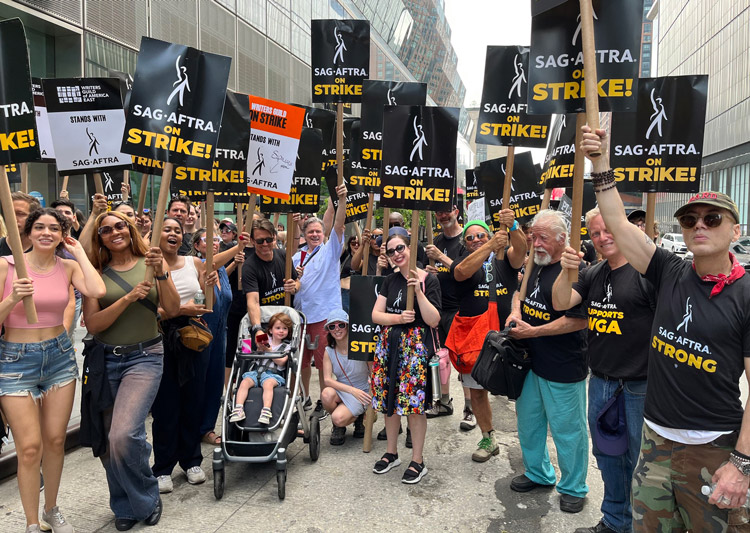LOS ANGELES — After a historic strike lasting 118 days, which partly overlapped with a strike against the same industry bosses by the Writers Guild of America, the Screen Actors Guild-American Federation of Television and Radio Artists reached a tentative agreement with the Alliance of Motion Picture and Television Producers. Workers took down their picket lines Nov. 9.
The union has been fighting for significant wage raises, for protection against exploitation from the use of artificial intelligence or digital images, and for access to the facts on streaming to assure better compensation. Union members will vote on the contract from Nov. 14 to Dec. 5.
Workers on the picket lines said they were battling boss moves that relegated more and more of them to the status of gig workers, with shorter contracts and lower pay in what is already an industry with few guarantees for regular work. The proposed contract contains a 7% wage increase for performers effective immediately, followed by a 4% increase in July 2024, and 3.5% the next July. Background actors, stand-ins and photo doubles will immediately get an 11% wage increase, then the same yearly increases as the other actors.
The union also won a change to the way residuals are paid, and more information and pay will be provided by the streaming companies. Duncan Crabtree-Ireland, the union chief negotiator, told the media that actors earn far less in residuals when their work is streamed, compared with network television.
“We were really looking to not only increase, but also to change the way that money is distributed in the streaming system,” he said. “The way that the business model has changed, and then the contracts had not kept up with, left our members in a very tight squeeze.”
The union also won some guarantees against use of AI without informed consent. Strikers on the picket line explained actors would often be required to sign consent forms allowing their images to be used not once, but forever, with no guarantee of additional compensation. Signing was a condition for getting the job.
The strike had a ripple effect on thousands of other industry workers. Thousands of caterers; set workers, such as electricians, painters, and carpenters; and truck drivers were laid off.
“We’re also grateful to our union siblings who stood by our side,” SAG-AFTRA President Fran Drescher said. “We truly could not have succeeded without your unwavering support.”
The studio heads hoped to starve out the strikers. “The endgame is to allow things to drag on until union members start losing their apartments and losing their houses,” one studio executive told the media.
But the strikers were determined to hold the line. “The strike has been devastating in terms of income and work opportunity, but also inspiring,” writer Alessandro Carmon told the Militant. “It’s a turning point for labor in Hollywood and the labor movement in general.”
The studio heads also didn’t count on the impact of other strikes and union battles that took place, including by UPS workers, Big Three autoworkers and Los Angeles hotel and hospital workers. They all joined each others’ protests and picket lines. That solidarity and overwhelming public support for the strike helped keep morale high.
When she joined a strike rally July 25 in front of Netflix offices, Ana Najera, a contract janitor at Paramount for 31 years and a member of Service Employees International Union, said, “We’re here to support actors and writers. We will also need support when our contract expires next May.”


